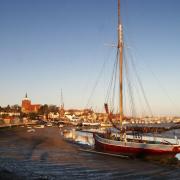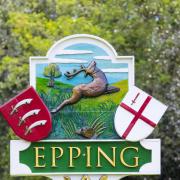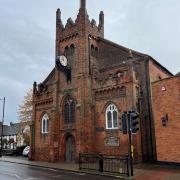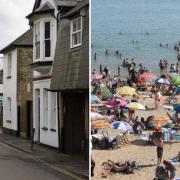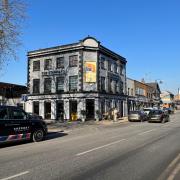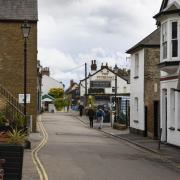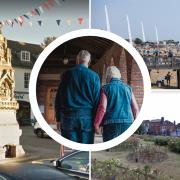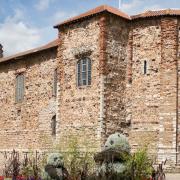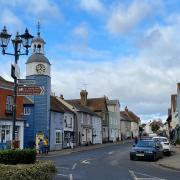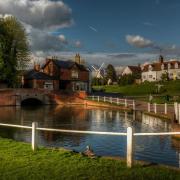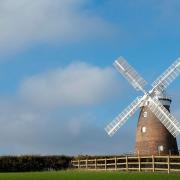The book Saffron Walden Through Time looks at the stunning street scenes of this thriving market town down the centuries. Here the author, Kate Cole, shares her unique insight

Saffron Walden is one of the prettiest and most picturesque towns in Essex. With its rich heritage of buildings surviving from the High Middle Ages to the 20th century, it has more than 300 buildings with Grade I or Grade II listings on the National Heritage List at Historic England. The area became a small settlement during the Bronze and Iron Age periods, and flourished throughout the Anglo-Saxon era. By the time the Normans arrived with William the Conqueror in 1066, the settlement of Walden was quite large. In 1086, the King sent his commissioners out across England to determine his new land and the amount of tax he could raise. The result of this survey, Domesday, recorded that there were 147 households in Walden in the Hundred of Uttlesford. Using a rough estimate that there were at least five people per household, this gives a very approximate calculation of an 11th century population of 735 people; a large settlement for its time. Domesday also recorded that there were meadows, woodlands and a mill in Walden.

50 or so years after Domesday, sometime between 1125 and 1141, Walden Castle was built by Geoffrey de Mandeville, the 1st Earl of Essex. In 1141 the town was awarded the right to hold a market and this was probably held in Walden Castle’s grounds. Another charter was granted in 1236. In 1514, King Henry VIII granted a new charter to the Guild of Holy Trinity, entitling the guild to hold a market. While today’s market is held in the square market place, the medieval market was chiefly just south of this area and there are still signs today of the medieval market with its rows, passageways and alleys. Each row and tiny area was once named to reflect its trade; Tanners Row, Fish Row, Mercers Row, Butcher Row, Butter Market and Pig Street. The market’s continuing importance to the town can be determined by the town’s medieval and Tudor name of Chipping Walden (or Chepyng Walden), chepyng being a Saxon word for market which was often used as a prefix on the name of many English market towns.

From the late 16th century onwards, the town gained the new prefix of ‘Saffron’ because of the tiny purple saffron crocuses which were grown in abundance around the town during the 16th and 17th centuries. Highly prized and expensive, the stigmas from the crocuses were used in medicine and also to create a yellow dye. To give an indication as to its high cost, in 1543 the churchwardens of the parish church at nearby Great Dunmow paid 2d for an unspecified quantity of saffron which was used for the town’s midsummer Corpus Christi feast. This saffron was the same cost as paying a man to turn the spit all day at the communal feast, but was double the price of the salt purchased for the town’s celebrations that day.

Saffron Walden is dominated by the magnificent church of St Mary the Virgin; one of Essex’s largest parish churches, with a total length of nearly 200 feet. A small Saxon church is thought to have existed within the town, but the church in its current location was first built in the mid-13th century. The church as seen today is the consequence of rebuilding work which took place between 1450 and 1525 under the guidance of two master masons. However, by the late 18th century, the church had become so run-down and near derelict that it was closed for public services. The church was restored between 1790 and 1793, and the spire was added in the 1830s, replacing an earlier lead-covered timber lanthorn.
Any historical account of Saffron Walden is not just about the narrative of its buildings, but also includes the tales of people who lived and worked, or had some minor impact on the town. People such as Oliver Cromwell, who spent several days and nights in the Sun Inn with the New Model Army in 1647, or the infamous highwayman, Dick Turpin, who in 1737 held up the Walden and the Stortford stagecoaches in Epping Forest. According to newspaper reports of the time, Turpin, ‘used the passengers with a great deal of civility’.
The story of how Saffron Walden developed into the town it is today is not complete without reference to the notable local Quaker family, the Gibsons. It was George Stacey Gibson (1818-1883) and his mother, Deborah, who gave the town the water fountain in 1863, which is still present in the centre of the market place. Gibson also financed the building of the grammar school in Ashdon Road (now Dame Bradbury’s School), several buildings in the market place (including the mock-Tudor façade to the Town Hall) and the Ladies Training College in South Road (now converted into a private housing development, Bell College Court). These are just a few of the buildings George Stacey Gibson personally financed or influenced. Before him, his father, Wyatt George Gibson financed the rebuilding of the almshouses in Abbey Lane, the building of the town’s hospital in London Road (now Uttlesford District Council’s offices) and was involved in other projects in the town such as laying the foundation stone for the Corn Exchange in 1848 (now the library). Wyatt’s brother, Francis Gibson, created the town’s hidden treasure, a sequence of linked landscaped Victorian gardens now known as Bridge End Gardens. The gardens have recently been restored and renovated back into a beautiful recreation and pleasure area for today’s population to enjoy.
Find out more
There is so much to discover in this attractive northwest Essex market town of Saffron Walden. You can read more about the town, along with the villages of Audley End, Littlebury, Wendons Ambo and the Chesterfords, and their journeys through time in Kate Cole’s book Saffron Walden and Around Through Time, published by Amberley Publishing. Kate also writes about aspects of Essex local history on her blog at www.essexvoicespast.com.




